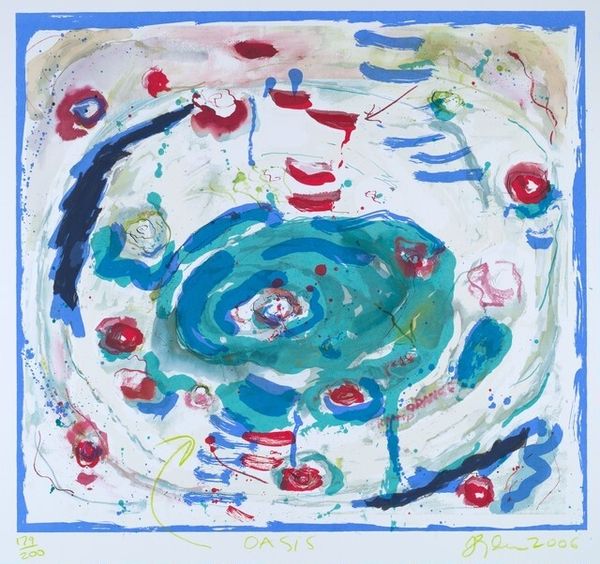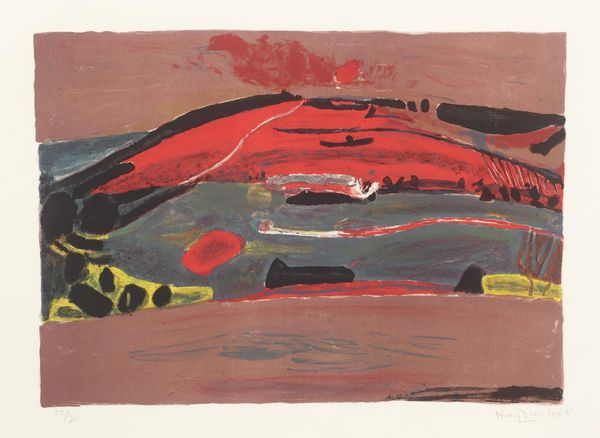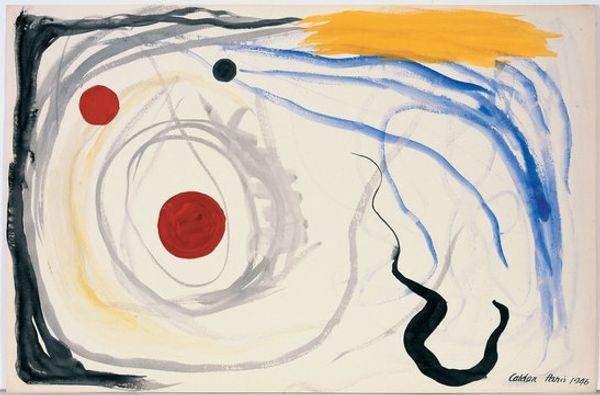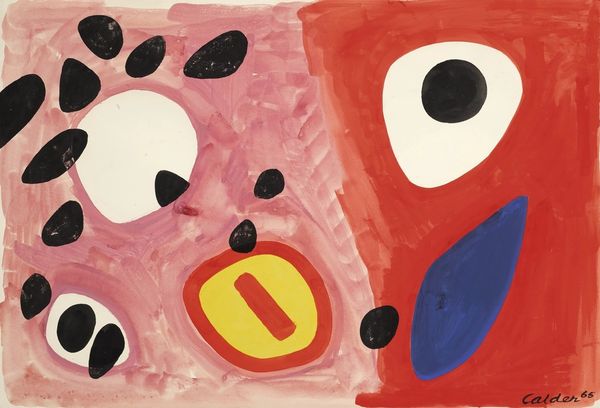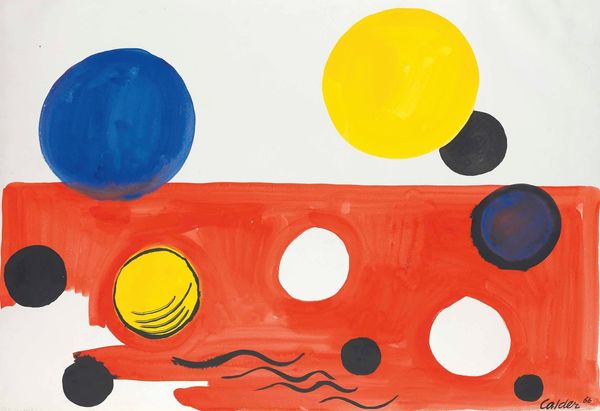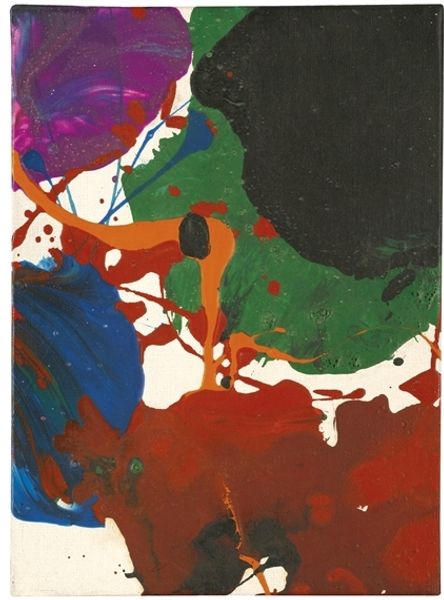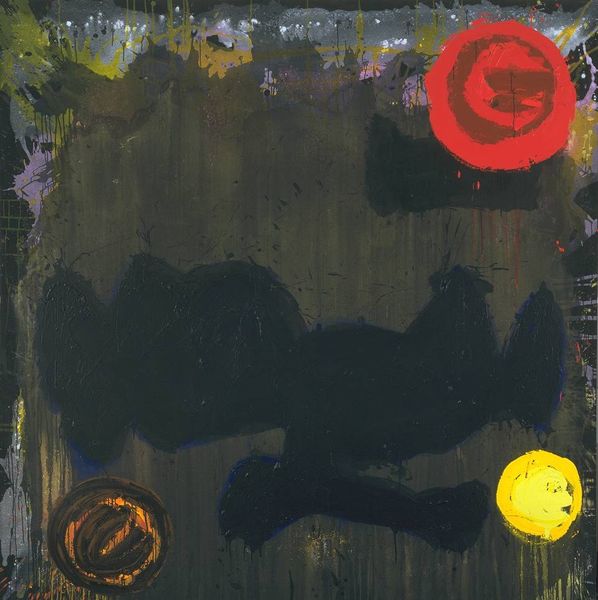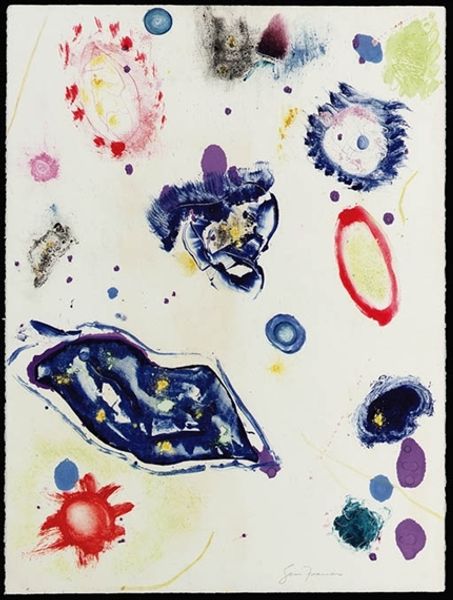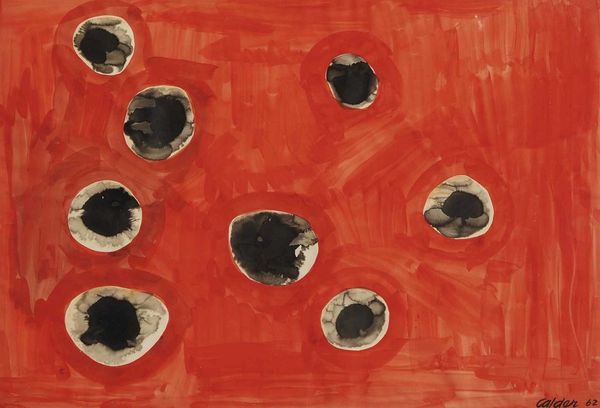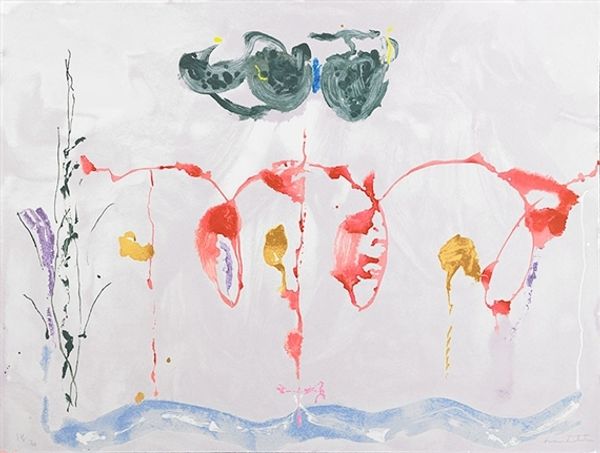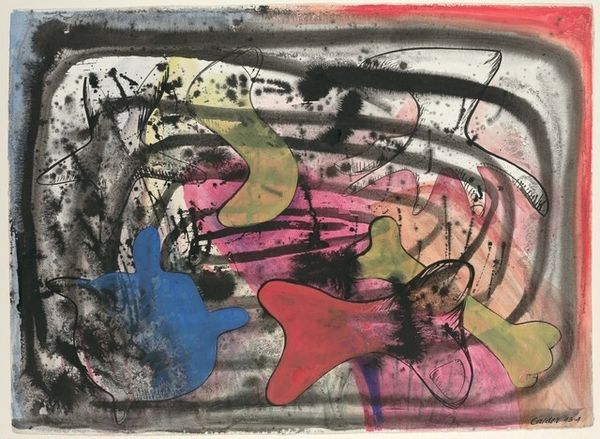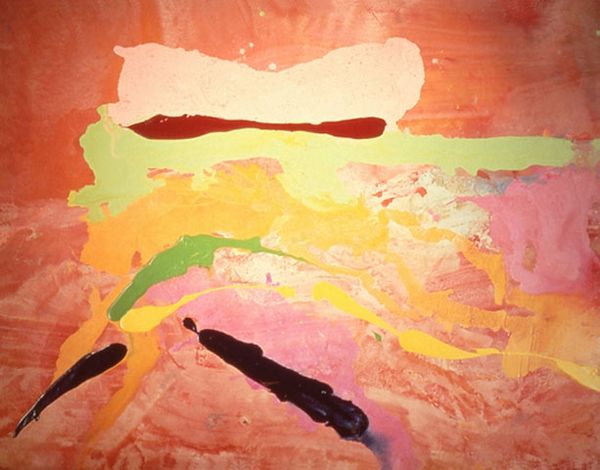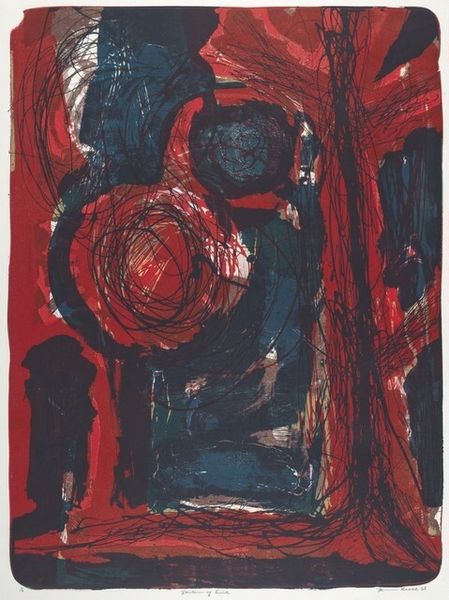
painting, watercolor
#
abstract-expressionism
#
abstract painting
#
painting
#
form
#
watercolor
#
biomorphic
#
abstraction
#
line
#
modernism
Copyright: Alexander Calder,Fair Use
Editor: So this is an Untitled watercolor by Alexander Calder from 1946. It’s got these intense reds and then pops of yellow and blue. It feels almost primordial to me. What do you see in this piece? Curator: The post-war context is key. Calder created this after returning from service in the Navy during World War II. Abstraction really flourished at this time, didn’t it? It represents, in part, a yearning to leave the horrors of reality and embrace an ideal world represented through pure form. Do you think that impulse is apparent here? Editor: Definitely, especially with how biomorphic the shapes feel – almost like looking into a microscope at something new being born, not referencing specific objects. So, the painting is rejecting realism? Curator: It’s more than that. It’s actively searching for a visual language divorced from the narratives that led to global conflict. These shapes, colors, the very act of making, become a utopian gesture, an effort to rebuild through aesthetic innovation. Also consider the role of galleries and museums as spaces for social healing. Did these abstract works fill such a purpose? Editor: I hadn’t thought about the museums themselves contributing to a healing process... I was only looking at it formally, like art history survey, but that makes way more sense! Curator: Consider, too, Calder's embrace of 'low' media like watercolor and gouache at this time. Was he democratizing his practice, creating artworks for broader circulation and viewership beyond traditional sculpture? Editor: So, not only is it a movement away from "reality," but the materials also represent something different to different audiences, right? Wow, there's much more happening here than I initially considered. Curator: Precisely. Art’s meaning isn't inherent. It’s always negotiated within specific social, cultural, and institutional settings. This piece exemplifies that.
Comments
No comments
Be the first to comment and join the conversation on the ultimate creative platform.
